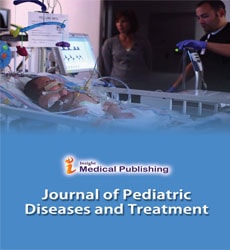Characterization of PHA synthases of acinetobacter baumannii isolate P39, bacillus cereus isolate P83 and azomonas macrocytogenes isolate P173 in a comparative approach
Noha S Elsayed
Ain Shams University, Egypt
Published Date: 2022-04-30Abstract
PHA synthase enzyme is the key limiting enzyme catalyzing polymerization of hydroxyacyl co-enzyme, a precursor derived from various metabolic pathways to produce polyhydroxyalkanoates (PHA) polymers. In the present study, characterization of this enzyme of three bacterial isolates namely Acinetobacter baumannii isolate P39, Bacillus cereus isolate P83 and Azomonas macrocytogenes isolate P173 was carried out using a 5,5-dithio-bis-2-nitrobenzoic acid assay for activity measurement. Various heterologous primers were designed for PCR amplification of the genes coded for PHA synthases of each isolate followed by analysis of the tertiary structure of the respective gene products using the Modular Approach to Structural class prediction (MODAS) software, Tied Mixture Hidden Markov Model (TMHMM) server and Swiss model software. The obtained results showed that the highest activity was for PHA synthase of A. baumnnii isolate P39 (600 U) and the highest specific activity was for PHA synthase of B. cereus isolate P83 (1500U/mg). Moreover, the results of the gel electrophoresis, their nucleotide sequencing, and conserved domain analysis showed that PHA synthase class III was found in A. baumannii isolate P39 and A. macrocytogenes isolate P173 while class IV was found in B. cereus isolate P83. The MODAS software deduced that the structural class of the tested PHA synthases was multi-domain protein (α/β) while the TMHMM server predicted the absence of transmembrane helix in the PHA synthase sequences. Swiss model software showed conserved cysteine residue and lipase box which both characterize α/β hydrolase superfamily. Taken together, the results of the enzymological and molecular characterization of PHA synthase enzymes of the tested isolates supported that the PHA formation was attained by the micelle model.

Open Access Journals
- Aquaculture & Veterinary Science
- Chemistry & Chemical Sciences
- Clinical Sciences
- Engineering
- General Science
- Genetics & Molecular Biology
- Health Care & Nursing
- Immunology & Microbiology
- Materials Science
- Mathematics & Physics
- Medical Sciences
- Neurology & Psychiatry
- Oncology & Cancer Science
- Pharmaceutical Sciences
